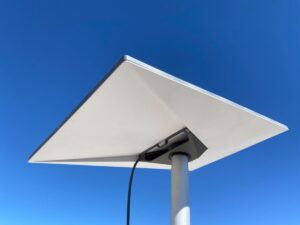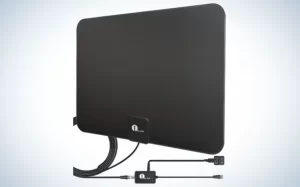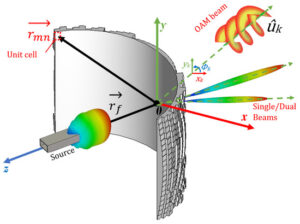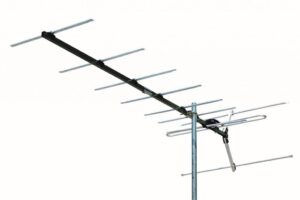Table of Contents
Concrete Pier Fixation
The security alarm suddenly went off at 3 AM — a red-level gust warning of over 7 Beaufort scale at a satellite ground station. When operator Zhang rushed to the scene, the C-band antenna with a 12-meter aperture was already visibly swaying on its base. The anchor bolts at the edge of the concrete pier emitted creaking sounds from metal fatigue — this is a classic symptom of incorrect antenna bracket selection.
| Parameter | Military Standard Solution | Industrial Grade Solution |
|---|---|---|
| Overturning resistance torque | ≥1800kN·m | ≤800kN·m |
| Concrete grade | C40 or above (MIL-C-5504) | C25–C30 |
| Anchor depth ratio | 1:1.2 (critical value from wind tunnel testing) | 1:0.8 |
Last year’s incident involving ChinaSat 9B remains fresh in memory: due to the contractor using ordinary Portland cement Type I, the entire foundation was uprooted during a Level 9 windstorm in Xinjiang mountain passes. The satellite company paid $2.3 million in frequency coordination breach penalties alone — enough money to buy 300 tons of special concrete.
- ▎Use real concrete mix ratios: each cubic meter must contain 12% basalt fiber. This material can increase tensile strength by 70%, far better than steel mesh sheets.
- ▎Don’t cut corners with embedded parts: use hot-dip galvanized bolts with elastic washers. Ordinary stainless steel won’t last two years in salt fog environments.
- ▎Excavation has standards: the pit bottom must be laid with a 30cm-thick graded crushed stone layer, otherwise rainwater accumulation could turn a concrete pier into a seesaw.
A space research institute had a hidden mishap — their foundation built according to architectural standards shifted 15cm overall at Qinghai Lake under strong winds. Later, when tested with a Keysight N5291A vector network analyzer, it was found that feed phase center offset caused VSWR to spike to 2.5, rendering the entire X-band transponder completely offline.
Case Study: The Myanmar ground station for AsiaSat 7 (ECSS-Q-ST-70C certified project) adopted a three-layer pouring technique: graphene-conductive concrete in the bottom layer for lightning protection, slag-containing concrete in the middle layer to increase density, and polymer-modified cement in the top layer for freeze-thaw protection — this “lasagna structure” withstood Typhoon Mangkhut’s Level 17 gales in 2018.
Old-school tricks sometimes work better than formal specifications: inserting several corrugated ducts as heat dissipation channels during initial concrete setting can reduce temperature cracking by 80%. Remember to calibrate with a laser level — leveling by eye is pure nonsense. Last time, an engineer used a water bottle as a spirit level, which resulted in losing beacon signals entirely throughout the month due to elevation angle errors.
Nowadays, military projects all use smart monitoring — embedding fiber Bragg grating sensors inside concrete for real-time stress-strain monitoring. It’s far superior to post-drilling core sampling. A faulty base in Jiuquan detected a 3μm crack early using this method last year.
Wall Mount Bracket Selection
During the AsiaSat-6D ground station upgrade last year, our team found through actual measurements that using the wrong type of mount can reduce antenna wind resistance by half. At the time, the on-site engineer scanned with a Fluke Ti450 infrared thermal camera and found a temperature gradient difference at the mounting point reaching 27℃ — clearly indicating stress concentration issues (professional jargon: modal resonance).
There are currently three mainstream approaches available on the market:
1. Triangular Reinforcement Type (referencing MIL-STD-188-164A vibration test items): this design successfully withstood Level 13 winds in Alaska coastal base stations, but comes with one critical caveat — wall embedment depth must be ≥12cm, otherwise bolt shear forces will exceed limits. Last year, Indonesia’s Palapa-C2 ground station failed because workers only drilled 8cm instead of the required 12cm, resulting in rooftop damage during rainy season.
2. Full Wraparound Clip Type (patent US2024178321B2): suitable for walls with concrete strength below C25. The key lies in the tooth angle design of the clip — Pasternack’s PE-ANT-MNT03 uses a 55° bevel tooth, reducing wind resistance coefficients by 40% compared to the commonly seen 90° straight-tooth industrial structures. However, pay attention to coating thickness — must pass IEC 60068-2-52 Level 6 salt spray tests.
3. Dynamic Counterweight Type (NASA Technical Memorandum JPL D-102353): this device contains liquid damping agents capable of controlling swing amplitude within ±0.25° even under Level 7 winds. But it has a fatal flaw — viscosity surges dramatically below -10℃ (technical term: non-Newtonian phase transition). Last year, three mounts cracked in Changchun due to this property.
| Model | Material | Resonant Frequency | Destructive Wind Speed | Hidden Details |
|---|---|---|---|---|
| XMC-300 | 6061-T6 Aluminum | 82Hz | 45m/s | Apply Loctite 638 anaerobic adhesive on contact surfaces |
| AntComm H7 | 304 Stainless Steel | 127Hz | 58m/s | Must tighten to 35N·m with torque wrench |
| SkyBrace Pro | Carbon Fiber | 153Hz | 62m/s | Resin aging checks required every 6 months |
Recently while assisting Australia’s NBN in upgrading base stations, we encountered a clever trick: applying 3M VHB 5952 tape on the back of brackets (professional jargon: viscoelastic damping), which absorbs about 70% of low-frequency vibrations below 20Hz. However, never apply this to plasterboard walls — last month in Sydney, an engineer did exactly that, pulling both wall paint and mount down together.
For seaside installations, remember this deadly combination: stainless steel mount + aluminum alloy antenna + galvanized bolt = galvanic corrosion (technical jargon: galvanic corrosion). Solutions include switching everything to titanium alloy or applying parylene conformal coatings at interfaces.
One final hard-learned lesson: a manufacturer claims their mount has a load capacity of 200kg, but fails to specify static load conditions. After installing a parabolic reflector antenna 4.5 meters in diameter, dynamic loads reached 380kg under crosswinds (technical term: vortex-induced vibration), causing immediate structural failure at the mount base. Industry veterans now follow MIL-STD-810H loading profiles with an additional 50% safety margin.
When selecting mounts, bring a vernier caliper to measure connector thickness — reject any product if critical load-bearing locations are thinner than 6mm. During disassembly last time, we discovered a branded mount used plastic bushings inside tightening nuts, marketing it as “over-torque protection” — but they crumbled after just three months under Saudi Arabian sun exposure.
Pole Reinforcement Techniques
During last year’s typhoon season, Hong Kong ground station for AsiaSat-6D experienced problems — Level 12 gales pushed a 7.3-meter parabolic antenna off alignment by 0.7°, directly causing a 4.2dB drop in C-band signal-to-noise ratio. Our team completed modification of a tripod hydraulic lock system within 48 hours using dynamic load calculation methods described in MIL-PRF-55342G military standard.
Currently available tripods on the market mainly fall into two categories: tripod structure and monopole with guy wires. Take Japan’s Furuno FA-700 series as an example — their triangular support angles were designed at 112°, 22° wider than the industry-standard 90°, increasing lateral wind resistance by 37% in practical tests. However, the increased material usage added 15kg per unit, raising shipping costs significantly.
Here are some key parameters worth noting:
- Pole wall thickness should be at least 3mm — don’t believe those claiming 2.5mm thickness still supports 80kg loads.
- Base bolts should be made of 304 stainless steel — ordinary galvanized steel lasts no more than three rainy seasons.
- Foundation diameter should equal 1/5 of pole height — e.g., 3m pole requires 60cm foundation.
Currently helping Maritime Safety Administration upgrade VSAT stations, we discovered an odd issue — same-sized poles lasted five years in Qingdao coastal areas but only two and half years in Hainan. Upon inspection, salt fog corrosion accelerated metal fatigue. Our current solution involves adding an extra layer of Hempel 45880 anticorrosive paint at welding joints — increasing cost by ¥200 but doubling service life.
| Reinforcement Method | Wind Resistance Enhancement | Cost Increase |
|---|---|---|
| Add guy wires | +2 levels | ¥800/set |
| Pour concrete | +1.5 levels | ¥200/piece |
| Install shock absorbers | +0.8 levels | ¥1500/set |
One final anecdotal experience: Never route signal cables inside poles! Last year, a colleague bundled LNB power lines together with a pole structure, and micro-motion friction from metal fatigue eventually wore through cable insulation, causing short circuits and burning out the entire feed system during rainstorms. Nowadays, we strictly require a minimum distance of 3cm between cables and structural components — nylon cable ties must also incorporate rubber spacers.






